.
Pafos, usually written Paphos in English, (Greek: Πάφος , Páfos; Turkish: Baf) is a coastal town in the south-west of Cyprus. Pafos is the mythical birthplace of Aphrodite, the Greek goddess of love, sex and beauty. In Greco-Roman times it was the island's capital, and it is famous for the remains of the Roman Governor's palace where extensive, fine mosaics are a major tourist attraction.
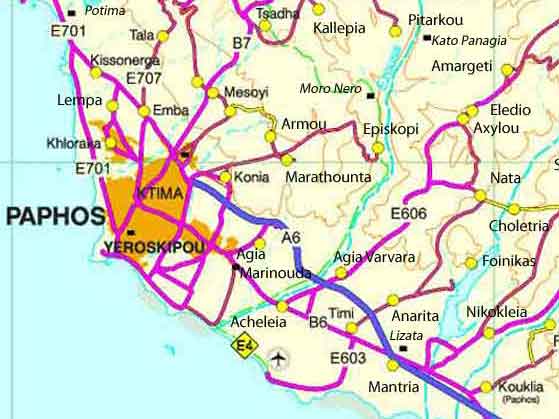
Another famous archaeological site is the Tombs of the Kings. The Apostle Paul visited the town during the 1st century. The town of Paphos is included in the official UNESCO list of cultural and natural treasures of the world's heritage.
Petra tou romiou area in Paphos
Paphos has been inhabited since the Neolithic period. It was founded by King Kinyras in 1400 BC. It was a centre of the cult of Aphrodite and of pre-Hellenic fertility deities. Aphrodite's legendary birthplace was on this island, where her temple was erected by the Myceneans in the 12th century BC. The remains of villas, palaces, theatres, fortresses and tombs mean that the site is of exceptional architectural and historic value. The mosaics of Nea Paphos are among the most beautiful in the world.

Paphos Town Hall ( Source : Aspect of Cyprus)
The port of Paphos was built by Nicocles, the last king of Paphos, at the time of Alexander the Great. It became the capital of the island replacing Salamis during the Hellenistic Period as its masters, the Ptolemies, favoured a location closer to their capital, Alexandria. The Romans retained Pafos as the seat of the Roman Governor. It was here that Apostle Paul converted the Roman Governor of the time, Sergius Paulus, to Christianity. The city contains many catacomb sites dating back to the early Christian period.


Eros (Amor) from a Mosaic, Roman period 3rd century AD
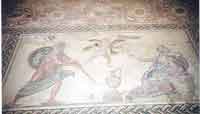
Poseidon, Eros and AmymonePoseidon, Eros and , House of Dionysus Paphos.
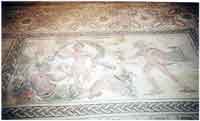
The River god Peneus, Daphne and Apollo,, House of Dionysus, Paphos.
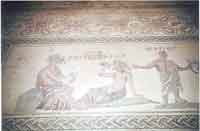
Icarius and the first winedrinkers Icarius House of Dionysus, Paphos.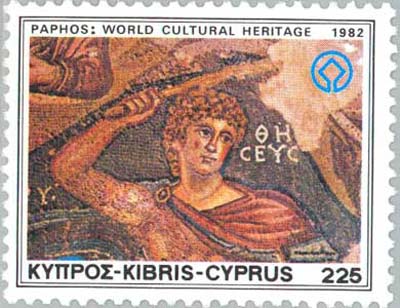
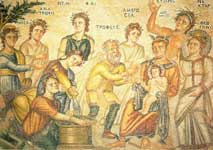
Hermes and Dionysus and various personifications


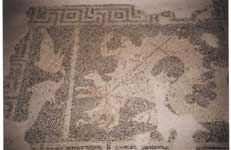
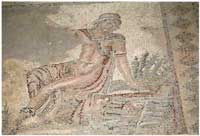
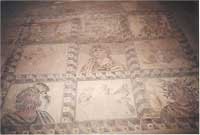
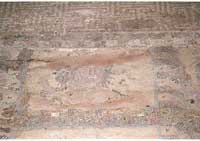
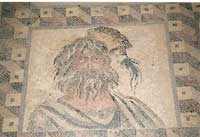
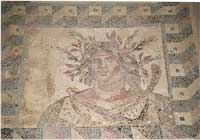

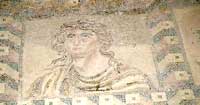
Dionysus or Aion or the spirit of time
See also: Cyprus, Archaeology Images
Despite its vulnerability to foreign incursions and raids, the city survived through the centuries, retaining an indefinable, legendary charm through the ages. It even survived the devastating earthquake in the 4th century AD.
Paphos, however, was gradually losing much of its attraction as an administrative centre, especially after the Nicosia. The city and its port continued to decline throughout the Middle Ages and Ottoman Rule, as Nicosia, and the port cities of Larnaka and Famagusta were gaining in importance.
The city and district continued to lose population throughout the British colonial period and many of its inhabitants moved to Limassol, Nicosia and overseas. The city and district of Paphos had remained the most underdeveloped part of the island until 1974.
The Turkish invasion and occupation of the major tourist resorts of Kyrenia and Famagusta led to major investments by the government and the private sector in the district of Paphos. There was rapid economic activity in all fields but especially tourism and the district's population stopped shrinking and indeed showed some signs of increasing. The government invested heavily in irrigation dams and water distribution works, road infrastructure and the building of Paphos International Airport while private initiative concentrated in hotel, apartment and villa construction and the entertainment infrastructure.
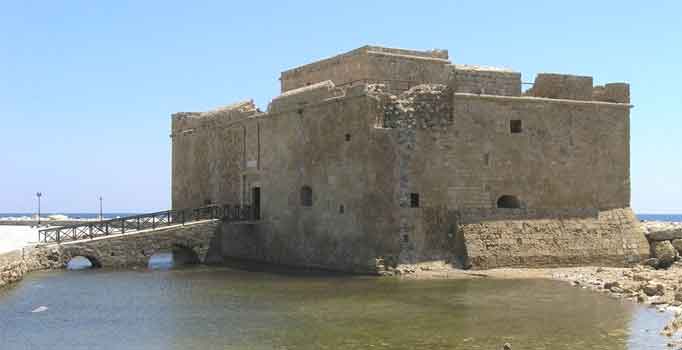
Turkish Castle of Paphos [Source]
Today Paphos, with a population of about 47.300 (end of 2001), is a popular sea and a fast developing tourist resort, home to an attractive fishing harbour. It is divided into two major quarters - Ktima, on the sea terrace, is the main residential district, and Kato Pafos, by the sea, is built around the mediaeval port and contains most of the luxury hotels and the entertainment infrastructure of the city.
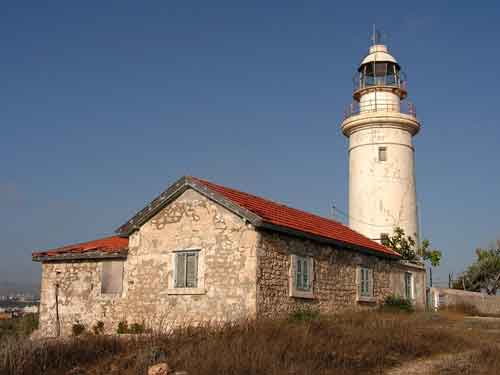
Lighthouse (Source)
Rauf Denktaş, the long-serving leader of the Turkish Cypriot community of Cyprus, was born here.
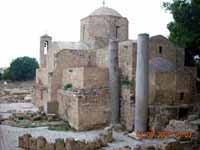
Panagia Chrysopolitissa Church



Villa in Coral Bay, Paphos

Christine Kondoleon, Domestic and Divine: Roman Mosaics in the House of Dionysos. Ithaca: Cornell University Press, 1994. ISBN 0-8014-3058-5.
Links
Mark Moxon's guide to Paphos
Paphos is mentioned in William Shakespeare's The Tempest in Act IV, Scene (i.)
Images Cyprus, Paphos District
|
Archaeological sites , ancient cities in Cyprus Aetokremnos | Alassa | Apliki | Choirokoitia | Chytri | Gialia Monastery | Enkomi | Kalavasos-Tenta | Kastros | Katalymata ton Plakoton | Klimonas | Kourion | Kyrenia ship | Lapithos | Marion | Marki Alonia | Mnemata Site | Paphos | Salamis | Shillourokambos | Soli | Tamassos | Tombs of the Kings (Paphos) | |
| Ancient Greece
Science, Technology , Medicine , Warfare, , Biographies , Life , Cities/Places/Maps , Arts , Literature , Philosophy ,Olympics, Mythology , History , Images Medieval Greece / Byzantine Empire Science, Technology, Arts, , Warfare , Literature, Biographies, Icons, History Modern Greece Cities, Islands, Regions, Fauna/Flora ,Biographies , History , Warfare, Science/Technology, Literature, Music , Arts , Film/Actors , Sport , Fashion --- |
Retrieved from "http://en.wikipedia.org/"
All text is available under the terms of the GNU Free Documentation License

